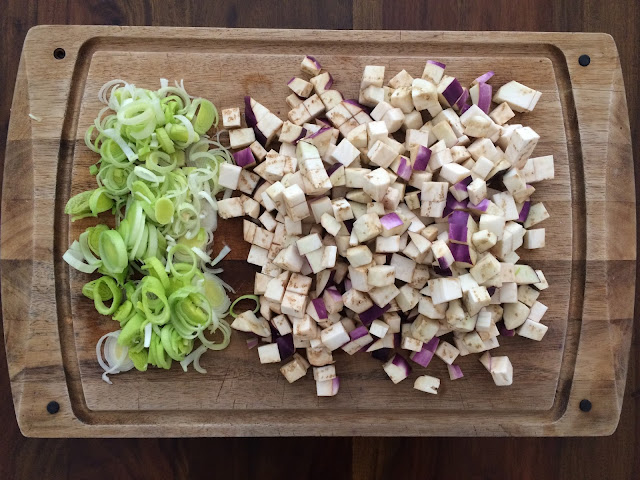Last Saturday, we had guests for lunch because Andrea needed to meet with a couple from our stake. This family would be driving an hour to come to Piacenza, so it was the least we could do to offer them lunch. I however have been exhausted lately (thanks, pregnancy) and couldn't even face the thought of making a proper Italian meal, which is made up of no less than three courses. I asked Fausta if she had a lasagna or baked pasta in her freezer (because her freezer is where all the goodies are!) so at least I wouldn't have to worry about the main dish. As always though, Nonna went above and beyond: Saturday morning she brought over a fresh baked pasta, an apricot cheesecake, and this torta salata which ended up being the star of the meal. Literally everyone had seconds and couldn't stop raving about it. Then they started raving about what a great cook I was and I had to come clean and tell them that I'm actually just a pro at mooching off my mother in law ;) So, I decided to learn to make that torta salata in order to actually take credit for it the next time it's on the table.
The torta salata is the quintessential Italian appetizer. Literally, torta salata means savory cake; essentially it is the Italian version of a quiche, but much less intimidating!
Torta Salata with Eggplant and Cherry Tomatoes
Torta salata con melanzane e pomodorini
Ingredients:
1 large puff pastry
2 cups cherry tomatoes
2 small eggplants
1 medium leek
1/2 a cup sun dried tomatoes
3 teaspoons capers
Mozzarella
3/4 cup ricotta
1/4 cup grated parmesan
1 cube vegetable bouillon
The white of one egg
Sugar
Salt
Pepper
Oregano
Instructions:
1.
Cut two cups of cherry tomatoes in half and lay face up on a parchment
paper covered baking sheet. Sprinkle with salt, pepper, sugar*, and then
drizzle with oil. Place in the oven at 350 degrees for about 10
minutes, just until they have begun to soften.
*In
Italian recipes a small amount of sugar is often added to the tomatoes
to counteract the acidity and render the tomato or sauce a bit sweeter.
2. Cup up the eggplant into half inch cubes.
3.
With a knife, remove the dark green leafy end of the leek and discard
it (or utilize it for a recipe that calls for vegetable stock). Slice
the white and light green part of the leek into thin rings. In a
generous amount of oil, sauté the leak over medium heat.
4.
Once the leak has softened, add the eggplant and keep on the heat until
cooked. If the oil has disappeared and the eggplant starts to brown
before it's cooked, add water and half a cube of vegetable bouillon to
the pan. Don't add more oil because the eggplant should not be oily. Add
salt and pepper to taste.
5.
Once cooked, transfer the leek and eggplant to a mixing bowl and let
cool. While it's cooling, cut the mozzarella into thin slices - just
enough to cover the top of the torta salata.
6. Unroll the puff pastry and lay it in a baking tray. Prick the crust with a fork, which will allow the steam to escape.
7.
Once cool, mix the eggplant and leek with the ricotta and parmesan
cheese. Then evently spread the mixture over the puff pastry, making
sure to leave one inch of space from the edge. Fold over the edge of the
puff pastry to create a crust and brush the crust with an egg white.
8.
Sprinkle the capers and sun-dried tomatoes over the filling, then place
the sliced mozzarella disks on top. Lastly, place the cherry tomatoes
over the mozzarella and sprinkle with oregano.
9. Place in the oven at 350 degrees for 30 minutes. It's done when the bottom side of the dough is golden. Serve warm.





















































